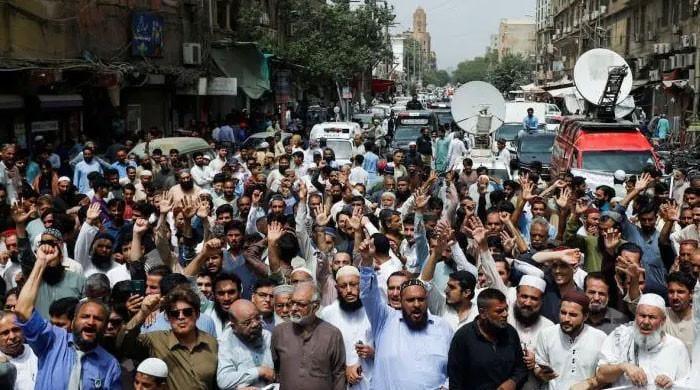An essentially left -wing political party is about to be announced in Pakistan. Among its main figures is Zulfikar Ali Bhutto Junior, the grandson of the most famous center-left leader in the country.
We expect it to be joined by others who share his idealist perspectives, with Western sense and politically not tested. But can such a party find success in a country where history has not been kind to the left – and, in a touch of irony, has also often turned against the extreme right?
Right now, the world is of course on an orbit on the right. Donald Trump in the United States leads this group of right-wing chiefs, but the same trend can be seen in the expanses of Europe and Asia, including India.
There are leftist governments grouped in South America and the center-left labor party in Australia as well as those who share the same ideologies in other parts of the world that make their best to evolve to give people more rights, a clean and economic voice.
Some, like Lula Da Silva, who made a return to Brazil, succeeded in a limited degree. Others are doing less well or quickly advance on their chosen path.
A question that we must ask ourselves and answer honestly is why the left has regularly failed in Pakistan despite the urgent need of left -wing policies that deal with the fate of landless peasants, peasants with small properties, workers, women and so many other groups of private people.
We should, nearly 78 years after the score, not cope with a situation where the inhabitants of Lyari find it difficult to obtain a water box and others in Punjab and Khyber Pakhtunkhwa still live in precarious lives, as illustrated by recent floods which swept the houses and led to colonies built along the river beds. This should not be acceptable in the 21st century.
There are several reasons for the failures of the left of Pakistan. The PPP, which presents itself as an essentially central -left party – although the one who also spoke in a strong voice of panislamism – was overwhelmed by those who separated from the central principle of the founders who created this party, which always survives but without much which can be called a left agenda.
However, it is still considered by many Pakistanis to place its roots further left than other groups. The most successful left party of the past few years, the National Party of Awami, has suffered by the literal murder of its main leaders, including members of the Bilour family and threats to other leaders, which prevents them from organizing rallies or meeting voters without constant fear of death through the door of a bomb, a firearm or a belly of suicide.
The right, and mainly the TTP, managed to lead what remained of the left tradition centered on KP, established by Khan Abdul Ghaffar Khan and his disciples. There are also other reasons why the left has failed to increase.
The campaign against the left under Ayub Khan, then other dictatorships, was one of the reasons for the collapse of the main left parties and also of their publications, seen mainly in the 1950s. Banking was placed in the Communist Party in 1954. The left was never recovered. His newspapers, reviews and brochures – some as a progressive Papers Ltd, which released Pakistan Times and Imroze – have never returned.
Today we see far too many intestine struggles among the left parties, which always survive. Small differences compared to precise ideologies have crossed the greater fracture between the Sino and Soviet ideals of these groups and separate them. But the problem is deeper than that. Left parties have failed to perceive more than a tiny percentage of the national or provincial vote.
This despite the considerable volume of work that some have carried out in specific areas, as in Kot Lakhpat in Lahore. There are of course other examples.
The question of religion and misunderstandings on this subject can be one of the reasons why people do not vote for groups on the left. But the problem is much more complex than that. A truly charismatic left -wing leader such as Thomas Sankara of Burkina Faso, Hugo Chavez du Venezuela, Ho Chi Minh of Vietnam is the type of leaders who could be able to bring together divided groups and convince people due to poor health coverage and even lower consumption of nutrients. This also affects their mental well-being.
We surely do not want a country that continues to survive in the way it does it today. It is also a fact that change is possible and could come fairly quickly to a country that has a massive quantity of young people and people with immense potential. These people need vocational training alongside more solid education and a little help start the rise in poverty and the misery it holds. There is no romance in poverty, despite its representation in classical fiction and other writings.
This is what a new party will need to persuade people because it is starting to aim for what seems impossible. The fact that Nepal and Sri Lanka in the region have governments with left -wing references should give a little hope to the Pakistani leaders on the left.
But it is also true that they will have to find a way to obtain mass support and provide enough figures to give them at least one voice to Parliament and provincial assemblies. It will take time, but it is a task that is certainly worth making an effort to make all the inhabitants of Pakistan.
Warning: The points of view expressed in this play are the own writers and do not necessarily reflect the editorial policy of PK Press Club.TV.
The writer is an independent columnist and former editor -in -chief of newspaper. It can be reached: [email protected]
Originally published in the news




